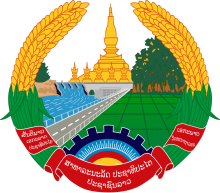Resource information
Climate change is the greatest challenge facing our generation. It touches all segments of society and it jeopardizes the future prosperity of the global communities, including the Lao People’s Democratic Republic (Lao PDR). In Lao PDR, climate change has resulted in higher temperatures, variable rainfall, longer dry seasons and droughts, and more severe and frequent flood and drought. Droughts and flooding harm agriculture, food security, forest and land use, water resources, energy, industries, public work and transportation, urban and public health. In the past decade, for example, Typhoon Ketsana caused US$94.2 million in damage and affected approximately 180,000 people and 30,000 households in 2009. In 2011, typhoons Haima and Nokten killed 41 people in 12 provinces and caused around US$200 million in damage (Government of Lao PDR, 2011). Three consecutive disasters affected Lao PDR in 2018, including the Son-Tinh and Bebinca storms. The disasters damaged infrastructure, production, service, and transportation, etc., costing the economy US$ 371.1 million, equivalent to 2.1% of the national gross domestic product (GDP) (Government of Lao PDR, 2019). In 2018, Lao PDR ranked as the twenty-second most vulnerable country to climate change in the world.1 This indicates that Lao PDR is extremely susceptible to climate change impacts. Lao PDR has been aware of and committed to building resilience and mitigate to climate change. The nation ratified the United Nations Framework Convention on Climate Change (UNFCCC) in 1995, Kyoto Protocol in 2003, and the Paris Agreement in 2016. In 2010, Lao PDR released the Strategy on Climate Change of the Lao PDR, followed by the Climate Change Action Plan of Lao PDR for 2013–2020 in 2013. Lao PDR communicated its first Nationally Determined Contribution (NDC) to the UNFCCC Secretariat in 2016. In September 2019, Lao PDR passed a Decree on Climate Change (Decree No. 321/Govt). This strategy is an important tool for addressing climate change in Lao PDR. It updates the Strategy on Climate Change of the Lao PDR, which has been implemented since 2010. This strategy defines the national vision on climate change to the year 2050. It also outlines the national strategy and programs of action on climate change management to 2030, especially risk prevention and reduction, resilience, adaption, recovery, rebuilding from impacts, and mitigation of greenhouse gas (GHG) emissions, the main cause of climate change. These are also undertaking climate action for sustainable development, enhancing institutional coordination and cooperation, strengthening multi-stakeholder engagement, and owning climate change management, domestically, regionally, and internationally.


